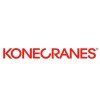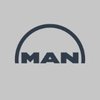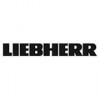Filter interviews by
MAN Energy Solutions Simulator Engineer Interview Questions and Answers
MAN Energy Solutions Simulator Engineer Interview Experiences
2 interviews found
I applied via Recruitment Consulltant and was interviewed before Mar 2022. There were 5 interview rounds.

Technical test of the engineering branch
(1 Question)
- Q1. What is harmonic analysis,modal analysis,Fem
- Ans.
Harmonic analysis, modal analysis, and FEM are all methods used in engineering to analyze the behavior of structures and systems.
Harmonic analysis is used to study the response of a system to harmonic excitation, such as vibrations.
Modal analysis is used to determine the natural frequencies and mode shapes of a structure, which can be used to predict its response to external forces.
FEM (Finite Element Method) is a nume...
(1 Question)
- Q1. Interview with the head
(1 Question)
- Q1. Salary discussion with the hr
Interview Preparation Tips
Presentation round of any project done in your previous organisation.
I applied via Naukri.com and was interviewed in Jul 2021. There were 4 interview rounds.
Interview Questionnaire
2 Questions
- Q1. Total 5 rounds
- Q2. Basic questions regarding ur projects
Interview Preparation Tips
Top trending discussions






Interview questions from similar companies

I applied via Recruitment Consultant and was interviewed before Sep 2020. There were 3 interview rounds.
Interview Questionnaire
2 Questions
- Q1. Previous company work experience
- Ans.
In my previous role, I led a team in developing scalable software solutions, enhancing system performance and user experience.
Led a team of 5 engineers to develop a cloud-based application that improved data retrieval speed by 30%.
Implemented Agile methodologies, resulting in a 25% increase in project delivery speed.
Collaborated with cross-functional teams to integrate user feedback, enhancing product usability.
Mentore...
- Q2. Plans in next 5 years
- Ans.
I plan to continue developing my technical skills and taking on leadership roles within the company.
Pursue advanced technical certifications
Lead cross-functional teams on complex projects
Mentor junior engineers
Explore opportunities for innovation and process improvement
Collaborate with senior management to set strategic goals
Interview Preparation Tips

I applied via Naukri.com and was interviewed in Jun 2024. There were 3 interview rounds.
Solving questions paper
CAD &Solid work test
(2 Questions)
- Q1. Project Handling experience
- Q2. Salary negotiation

Senior Engineer Interview Questions & Answers
Valmont Structuresposted on 30 Jun 2022

(1 Question)
- Q1. General discussion of your work history
(1 Question)
- Q1. Stream technical question
General work related assignment
Interview Preparation Tips

(2 Questions)
- Q1. What is QA and QC
- Ans.
QA stands for Quality Assurance and involves processes to prevent defects, while QC stands for Quality Control and involves processes to identify defects.
QA focuses on preventing defects in the product or service being delivered
QC focuses on identifying defects in the product or service being delivered
QA involves processes such as reviews, audits, and process improvements
QC involves processes such as testing, inspectio...
- Q2. Welding details
Interview Preparation Tips

I applied via LinkedIn and was interviewed before Feb 2022. There were 2 interview rounds.

(2 Questions)
- Q1. Releted to blade industry Releted to Composite
- Q2. Composite structure and properties, VARTM
Interview Preparation Tips

(1 Question)
- Q1. What tasks did you perform during the calibration process?
- Ans.
During the calibration process, I performed tasks such as adjusting settings, testing equipment accuracy, and documenting results.
Adjusting settings on the equipment to ensure accuracy
Testing equipment accuracy using known standards
Documenting calibration results for future reference
Interview Preparation Tips

Senior Engineer Interview Questions & Answers
Segula Technologiesposted on 11 May 2025
I appeared for an interview in Nov 2024, where I was asked the following questions.
- Q1. Can you provide a summary of your past professional experiences?
- Ans.
Experienced Senior Engineer with a strong background in software development, project management, and team leadership.
Over 10 years of experience in software engineering, focusing on full-stack development.
Led a team of 5 engineers in developing a scalable e-commerce platform, increasing sales by 30%.
Implemented Agile methodologies, resulting in a 25% reduction in project delivery time.
Worked on cloud-based solutions, ...
- Q2. What are the reasons for hiring candidates?
- Ans.
Candidates are hired for their skills, cultural fit, experience, and potential to contribute to the team's success.
Relevant Skills: Candidates should possess the technical skills required for the role, such as programming languages or tools.
Cultural Fit: A candidate's values and work style should align with the company's culture to ensure a harmonious work environment.
Experience: Previous work experience in similar rol...

I applied via Naukri.com and was interviewed in Dec 2022. There were 2 interview rounds.

(2 Questions)
- Q1. ECR, ECM, CONFIGURATION, types of BOM,EBOM and MBOM
- Q2. Pure technical questions about my experience
Interview Preparation Tips
MAN Energy Solutions Interview FAQs
Tell us how to improve this page.
MAN Energy Solutions Interviews By Designations
- MAN Energy Solutions Simulator Engineer Interview Questions
- MAN Energy Solutions Senior Engineer Mechanical Interview Questions
- MAN Energy Solutions Manager Interview Questions
- MAN Energy Solutions Senior Software Developer Interview Questions
- MAN Energy Solutions Senior Project Manager Interview Questions
- MAN Energy Solutions Electrical Design Engineer Interview Questions
- MAN Energy Solutions Animation/Graphic Artist Interview Questions
- MAN Energy Solutions CAD Design Engineer Interview Questions
- Show more
Interview Questions for Popular Designations
- Senior Engineer Interview Questions
- Production Engineer Interview Questions
- Project Engineer Interview Questions
- Junior Engineer Interview Questions
- Service Engineer Interview Questions
- Site Engineer Interview Questions
- Maintenance Engineer Interview Questions
- Assistant Engineer Interview Questions
- Show more
Overall Interview Experience Rating
based on 1 interview experience
Difficulty level
Duration
Interview Questions from Similar Companies
MAN Energy Solutions Simulator Engineer Reviews and Ratings
based on 1 review
Rating in categories
|
Design Engineer
103
salaries
| ₹3 L/yr - ₹8.5 L/yr |
|
CAD Engg
86
salaries
| ₹3.5 L/yr - ₹6 L/yr |
|
System Engineer
53
salaries
| ₹3.7 L/yr - ₹7.6 L/yr |
|
Senior Engineer
39
salaries
| ₹8.9 L/yr - ₹14.7 L/yr |
|
Senior Design Engineer
34
salaries
| ₹8.1 L/yr - ₹13.9 L/yr |

Sulzer

Mann And Hummel Filter

Buhler

Konecranes
- Home >
- Interviews >
- MAN Energy Solutions Interview Questions












